Liverpool and Barcelona can both consider their domestic campaigns to have been fine ones this season. Having lost just three games between them in their league competitions, the real battle came at the Camp Nou on Wednesday as they clashed in the first leg of the Champions League semi-final in Madrid on 1st June.
After a narrow start, it was Barcelona who broke the deadlock in the first half against the run of play. Luis Suárez got onto the end of a cross to open the scoring and celebrated against his former club. Liverpool were still in the tie and pinned Barcelona back for much of the second half, but were downed by a rebound from Lionel Messi who then followed up with a magnificent free-kick to decide the tie on the night.
Here, our tactical analysis considers what both managers can take from the game ahead of what is bound to be a hardfought second leg at Anfield. With a substantial lead, Barcelona can be hopeful, but the return of one player, in particular, could give Liverpool hope.
Line-Ups
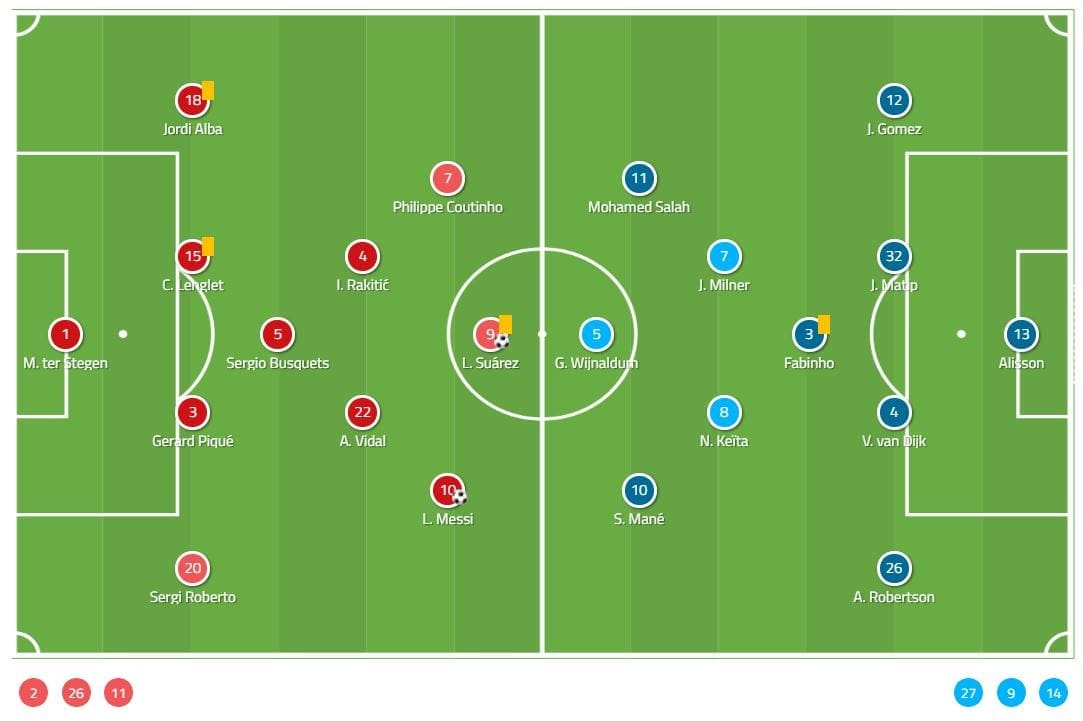
Barcelona selected their expected line-up for this tie, adding Arturo Vidal in midfield to add more steel and energy in what was bound to be a high-paced game. That saw him get the nod over Arthur Melo, whilst Sergi Roberto was selected instead of Nelson Semedo to provide a more conservative approach to denying Sadio Mané space down the flank.
For Liverpool, the absence of Roberto Firmino due to injury led to some unexpected selection decisions from Jurgen Klopp. Rather than selecting a natural striker, he went for a midfield diamond with Georgino Wijnaldum acting as a false nine in the most offensive role.
This accompanied another surprise in that Joe Gomez was chosen ahead of Trent Alexander-Arnold in defence. The defensive solidity of the former Charlton man was chosen, logically, to help deny the attacks from Jordi Alba down the flank. However, given the time he has been sidelined by a broken leg, he visibly tired as the game went on.
Liverpool’s midfield diamond
This tie looked to be decided by the way that Liverpool shaped up and Klopp’s decision to go with a diamond was perhaps a gamble. In truth, it was not that different from their usual 4-3-3 formation, with many arguing that Wijnaldum was operating as a third striker. In truth, the four rotated freely and replicated a midfield diamond with Fabinho and James Milner taking up the defensive role and Wijnaldum and Naby Keita sharing the offensive responsibilities.
When on the defensive, the system came most into play as it became clear that Klopp was insistent on packing the final third with as many players as possible. Mohamed Salah and Sadio Mané would drop deep, blocking any space for the full-backs to run into and helping out their own defenders by tracking overlapping runs. It also allowed the deeplying midfield to focus purely on denying Messi space in between defence and midfield, allowing the central defensive pairing to focus on the likes of Suárez and Philippe Coutinho drifting in.
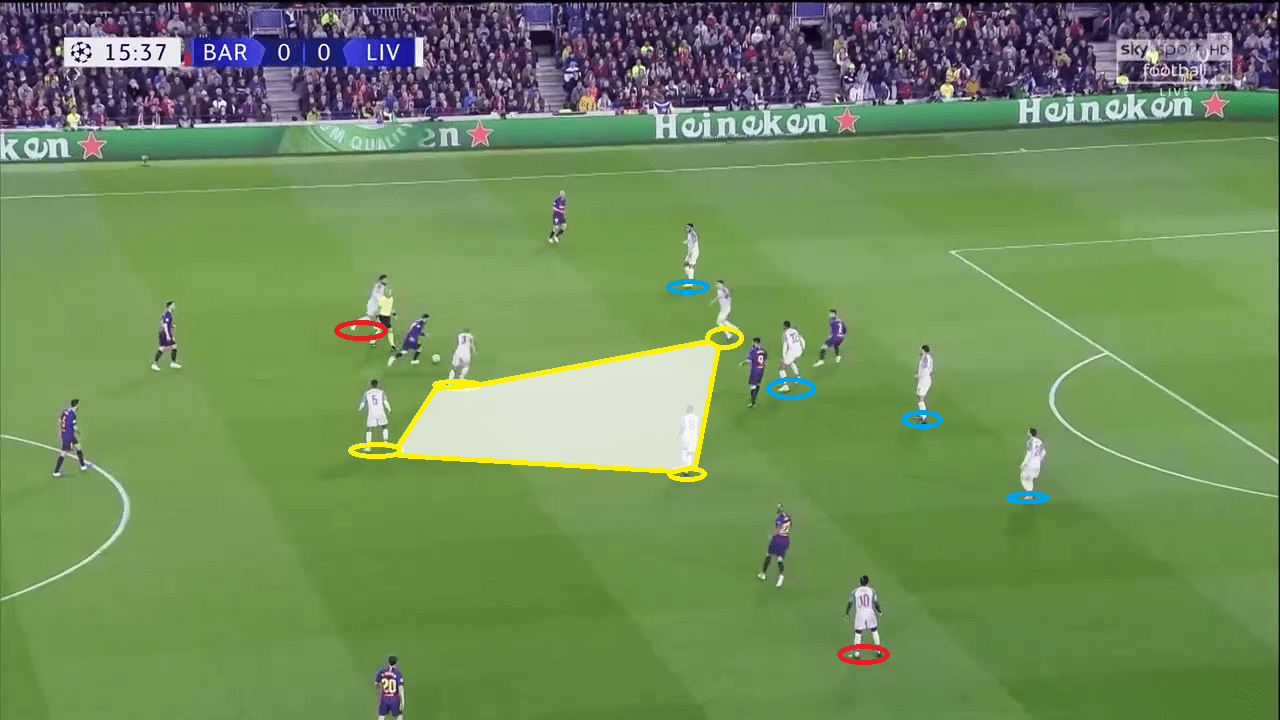
In the defensive phase, it worked well. Liverpool managed to deny Barcelona’s attackers space. When they were caught out, it was primarily as Barcelona got forward on the counter and found that the diamond and wingers had not been given a chance to track back into their usual positions. When this occurred, Barcelona had the ability to pull men out of position. Whilst Liverpool did get back quickly and readjust in most cases, it was on such counter-attacks when Barcelona threatened and with seven such attacks, they almost doubled their season average of four and pulled off a shot on three of them.
Firmino’s absence was pivotal
After the injury blow to Firmino, Liverpool were forced to adapt. Klopp saw the solution in a midfield diamond with Wijnaldum as the false nine, but as already seen, it was produced mixed results. In attack, the truth is that it was not a success. Mané assumed the more central role, often peeling off Gerard Piqué at the far post, whilst Salah stuck wider, hugging the line and looking to get in behind Alba. Even still, he was often found drifting centrally to fill the space. Given the gaps that the Catalan defender can often be guilty of leaving, it seems that it was a real missed opportunity not to have the Egyptian bombing in behind.
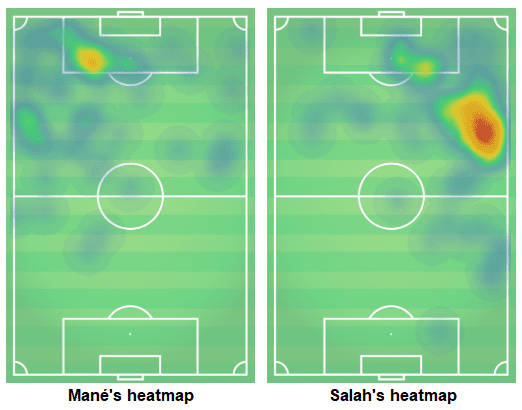
The other key impact that it had was a loss of fluidity in attack. Whereas the usual front three interchange and move around, taking up each others’ roles freely, the process was not as smooth with Wijnaldum taking up the third forward role. That meant that when the Dutchman drifted wide, he would often not be making the runs to make diversions and provide an option, as shown below, where another player may have made the run along the blue line to give an option to James Milner. Instead, he was often reluctant to gamble on such runs and held back. That meant that Milner’s only option was to try a hopeful cross into the box with no end result.
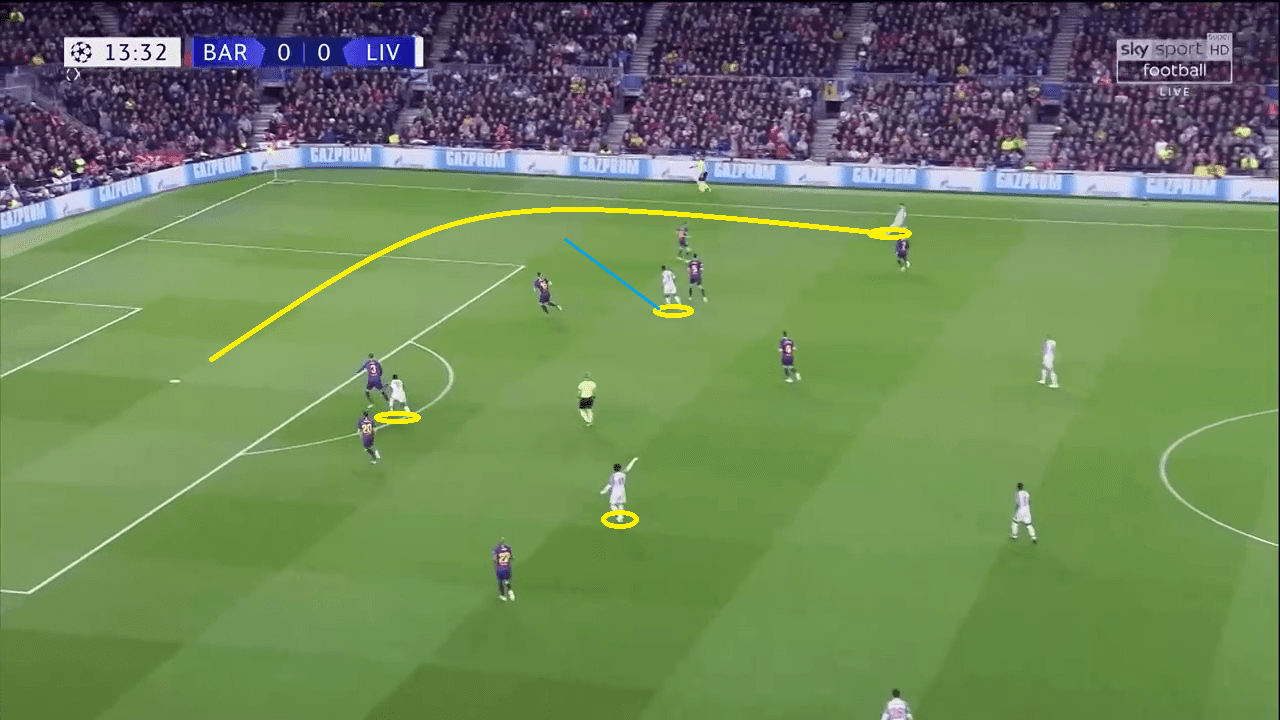
Not since the win over Paris Saint-Germain at Anfield earlier this season have Liverpool delivered more crosses in a European fixture and ended with very few results. Without that link between midfield and attack, Firmino’s absence was particularly felt. Salah and Mané worked admirably to make the system work without him, but questions will be raised over whether a natural striker would have been the better option to at least attempt to get on the end of the crosses delivered into the box from out wide.
A game of pressing
With two sides playing such high energy styles, pressing was always destined to be a key element of determining the victor of this tie. Again, the Liverpool midfield came into this with a unique set-up. The Reds would sit back to the halfway line, creating a line of four between one offensive player and one defensive. The offensive would have the role to press the last men and be ready to pounce should an interception be completed. This was almost always Mané, and occasionally Salah, giving pace to help them break away and capitalise on the turnover in possession as Barcelona looked to move forwards.
Similarly, the defensive would be given the task of tracking Messi and protecting the backline. With Fabinho and Milner given this role, they could sit deeper and await a potential breakthrough ready to make the recovery, explaining why they both topped the statistics for both interceptions and recoveries.
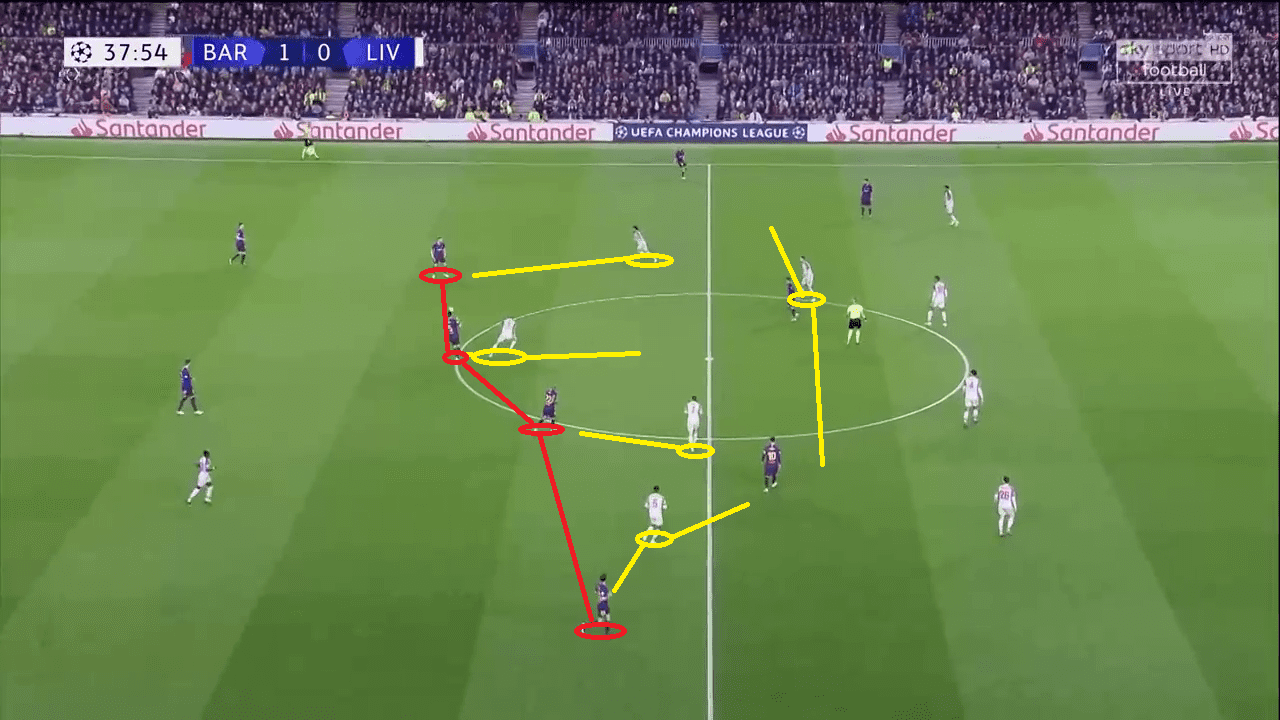
The remaining four would sit on the halfway line, almost waiting for Barcelona to approach. As soon as they did, each player would close down their man as soon as they came onto the ball. This left them with no choice but to play the ball back to their defence or out wide to the full-back, who would have to push on in order to provide another option. When the full-backs pushed on, it provided an opportunity to exploit the space in behind. This is something that Salah did well but perhaps did not produce the results that Liverpool had been hoping for.
Barcelona did a good job with their pressing too, particularly pressing high up the pitch. The likes of Suárez and Coutinho would particularly put pressure on Alisson when on the ball and look to force the Brazilian to play a hopeful long ball, rather than play out. Virgil Van Dijk also found himself under pressure, unable to take time to look up and play the ball out as he did with such success against Bayern Munich in the last 16. The result was that Liverpool were forced to be more direct, with 61 long balls compared to 52 on average this season, and move the ball more quickly in transition to escape the high press organised by Ernesto Valverde.
Messi found a way out
In the end, the difference between the two teams would be Lionel Messi. For a large part of the first half, the English side narrowed him down and pressed well to keep his presence to a minimum, but in the second half, he truly came into his own. That was in part down to the role that he played, drifting deeper in order to avoid the attention that the back four, Fabinho and Milner were giving him early on.
The Argentinean only had one opportunity in the first half of particular note, exploiting the space in behind as Suárez’s front post run distracted the two central defenders. Robertson got back to cover well and denied the number 10 a chance to score. Such movement on the counter was key as Messi was able to exploit the space that he could not find when the midfield got back into position, occupying the central spaces that they would not allow him the time or space to do otherwise.
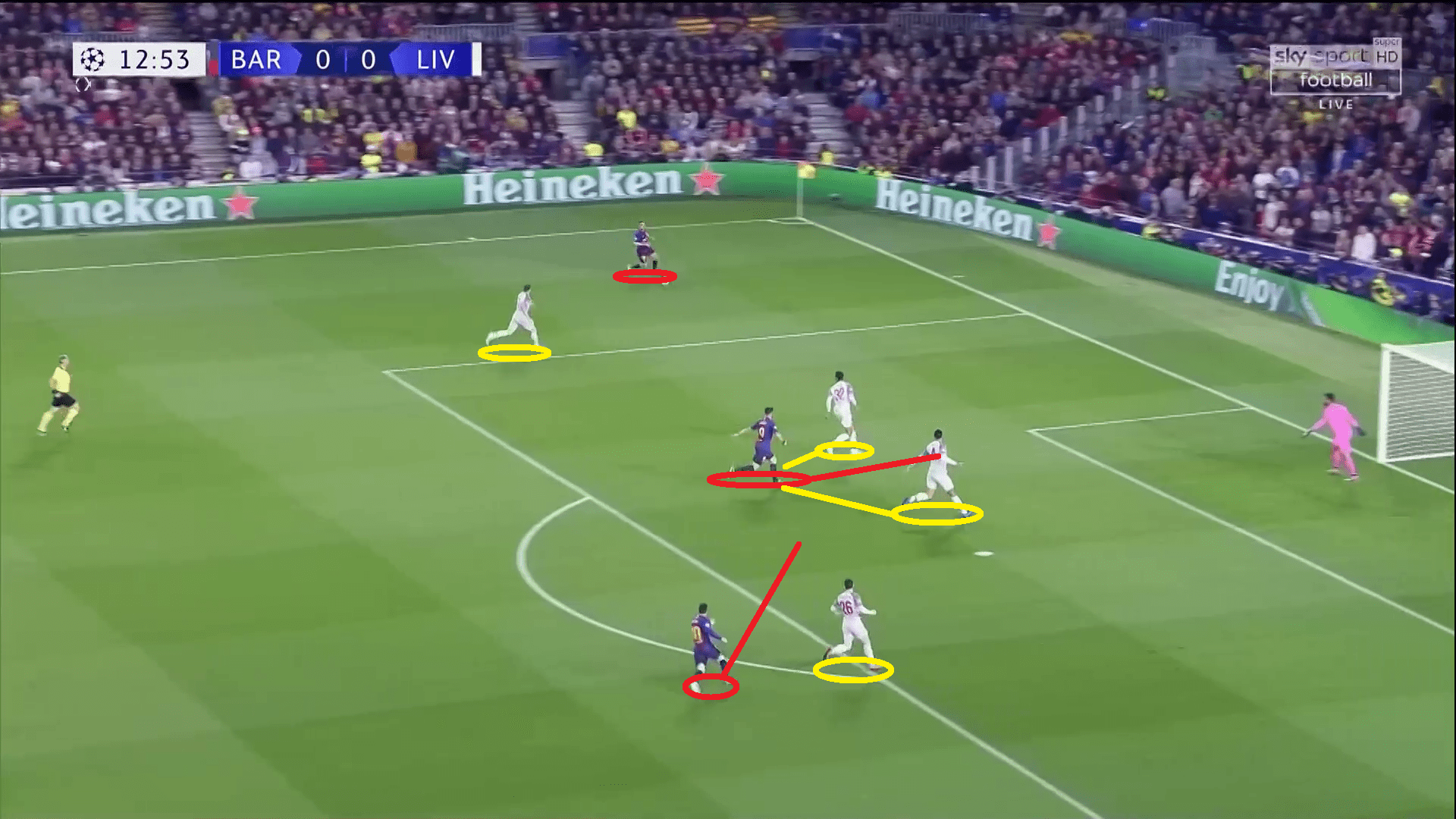
In the second half, rather than getting in behind the midfield markers by cutting in from out wide, he remained central and dropped deeper. By running at his rivals, he stood a greater chance of beating them or drawing the foul, as he did from Fabinho before scoring Barcelona’s third. This approach saw him make four of his six progressive runs and complete six of 11 dribbles all in the second half, showing how he looked to dictate play with his runs from deep rather than cutting in from a wide position.
Liverpool were fading and tiring as the game went on and, with the scoreline against them, were reluctant to commit more resources to the middle of the park to control Messi. The result was that Klopp was too slow to look to shut down this tactic and it allowed him to score two goals which proved to be decisive. Both goals originated from him running from deep and arriving into the final third late.
Conclusion
With a scoreline of three goals against without reply, Liverpool can justifiably feel a little hard done by. Their performance was organised, efficient and well thought through, even without the spark that would have seen them get the crucial away goal. Injury to Firmino was undoubtedly the biggest blow that Liverpool could face and it disrupted their whole system, robbing them of the free-flowing movement, particularly on the counter, that could have made a substantial difference.
Barcelona, much like their eternal rivals Real Madrid, made their few chances count. Alisson had little else to do than pick the ball out of his net on three occasions, with two shots going straight at him and three others beating him. Their pace and guile on the counter was crucial in order to exploit the spaces left in behind by a Liverpool system set up to deny the likes of Messi the space to roam free.
Ahead of a second leg in which Liverpool will be left with no choice but to go all out attack, vast improvements will be required in order to find a way through. Not only will strikers need to be more clinical, given that Liverpool’s xG was only 0.33 fewer than Barcelona’s and reached as high as 1.75 on Wednesday, but they will also need to be more natural in order to find space in between Barcelona’s defensive line. This all in a game in which the Spaniards will have no reason to gamble.
If you love tactical analysis, then you’ll love the digital magazines from totalfootballanalysis.com – a guaranteed 100+ pages of pure tactical analysis covering topics from the Premier League, Serie A, La Liga, Bundesliga and many, many more. Buy your copy of the April issue for just ₤4.99 here, or even better sign up for a ₤50 annual membership (12 monthly issues plus the annual review) right here.

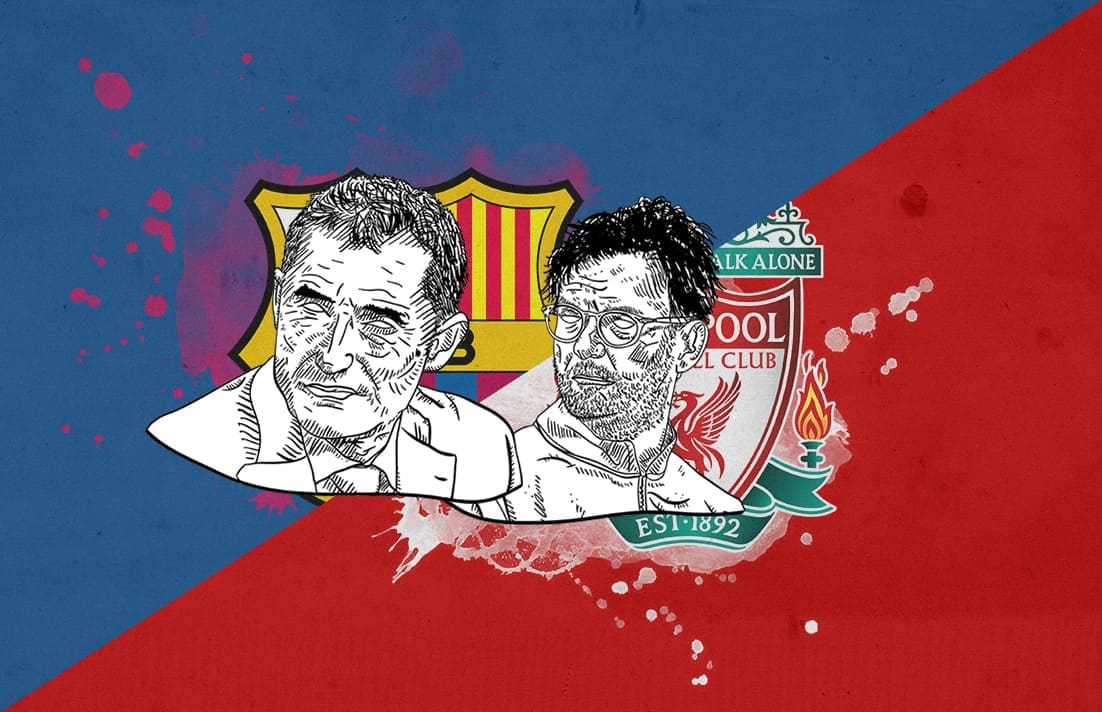



Comments